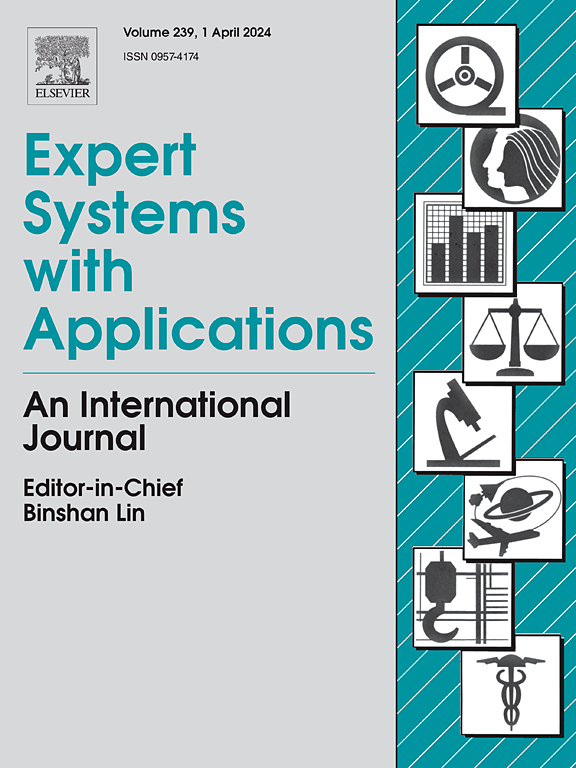A multi-timescale dynamic graph attention network (MTDGAT) for short-term traffic prediction under special events
IF 7.5
1区 计算机科学
Q1 COMPUTER SCIENCE, ARTIFICIAL INTELLIGENCE
引用次数: 0
Abstract
Accurate traffic prediction is a key task in Intelligent Transportation Systems (ITS) and is crucial for proactive traffic control and management. Traffic prediction under special events (SEs) has long been challenging due to the uneven spatio-temporal distribution of traffic state and high traffic fluctuations. The present work proposes a Multi-Timescale Dynamic Graph Attention Network(MTDGAT) for short-term traffic prediction under SEs. Specifically, we design a multi-timescale block that employs attention mechanisms to model the relationships between historical traffic states and future traffic states across different time scales in a fine-grained manner, aiming to accurately capture the complex traffic evolution patterns under SEs. Our model adopts an encoder–decoder architecture, wherein the encoder combines historical data and SEs Encoding to construct a historical multi-timescale spatio-temporal graph, which is then transformed into a future multi-timescale spatio-temporal graph through a transform module. Extensive experiments were conducted on real-world traffic datasets to further validate the performance of the proposed model. First, ablation experiment results demonstrate the superiority of the proposed MTDGAT model in capturing short-term evolution of traffic states under SEs. Furthermore, through comprehensive comparison experiments, it is indicated that the MTDGAT outperforms other baseline models across all prediction steps under SEs. Specifically, MTDGAT achieves MAE of 3.21 and MAPE of 14.46 for 1-step prediction, alongside MAE of 4.15 and MAPE of 19.9 in 4-step prediction. The outcomes of the present work could provide deeper insights into spatio-temporal traffic evolution under the influence of SEs and contribute to the formulation of proactive traffic management and control strategies in such scenarios.
基于多时间尺度的动态图关注网络(MTDGAT)在特殊事件下的短期交通预测
准确的交通预测是智能交通系统(ITS)中的一项关键任务,对主动交通控制和管理至关重要。由于交通状态时空分布不均匀和交通波动大,特殊事件下的交通预测一直是一个难题。本文提出了一种多时间尺度动态图注意力网络(MTDGAT),用于网络环境下的短期交通预测。具体而言,我们设计了一个多时间尺度块,利用注意力机制对不同时间尺度的历史交通状态和未来交通状态之间的关系进行细粒度建模,旨在准确捕捉复杂的交通演化模式。我们的模型采用编码器-解码器架构,其中编码器结合历史数据和SEs编码构造历史多时间尺度时空图,然后通过转换模块将其转换为未来多时间尺度时空图。在实际交通数据集上进行了大量实验,以进一步验证所提出模型的性能。首先,消融实验结果证明了所提出的MTDGAT模型在捕捉交通状态短期演化方面的优越性。此外,通过综合对比实验,表明MTDGAT在se下的所有预测步骤中都优于其他基线模型。其中,MTDGAT一步预测的MAE为3.21,MAPE为14.46,四步预测的MAE为4.15,MAPE为19.9。本研究结果可为深入了解交通系统影响下的时空交通演变提供依据,并有助于制定此类情景下的主动交通管理和控制策略。
本文章由计算机程序翻译,如有差异,请以英文原文为准。
求助全文
约1分钟内获得全文
求助全文
来源期刊

Expert Systems with Applications
工程技术-工程:电子与电气
CiteScore
13.80
自引率
10.60%
发文量
2045
审稿时长
8.7 months
期刊介绍:
Expert Systems With Applications is an international journal dedicated to the exchange of information on expert and intelligent systems used globally in industry, government, and universities. The journal emphasizes original papers covering the design, development, testing, implementation, and management of these systems, offering practical guidelines. It spans various sectors such as finance, engineering, marketing, law, project management, information management, medicine, and more. The journal also welcomes papers on multi-agent systems, knowledge management, neural networks, knowledge discovery, data mining, and other related areas, excluding applications to military/defense systems.
 求助内容:
求助内容: 应助结果提醒方式:
应助结果提醒方式:


